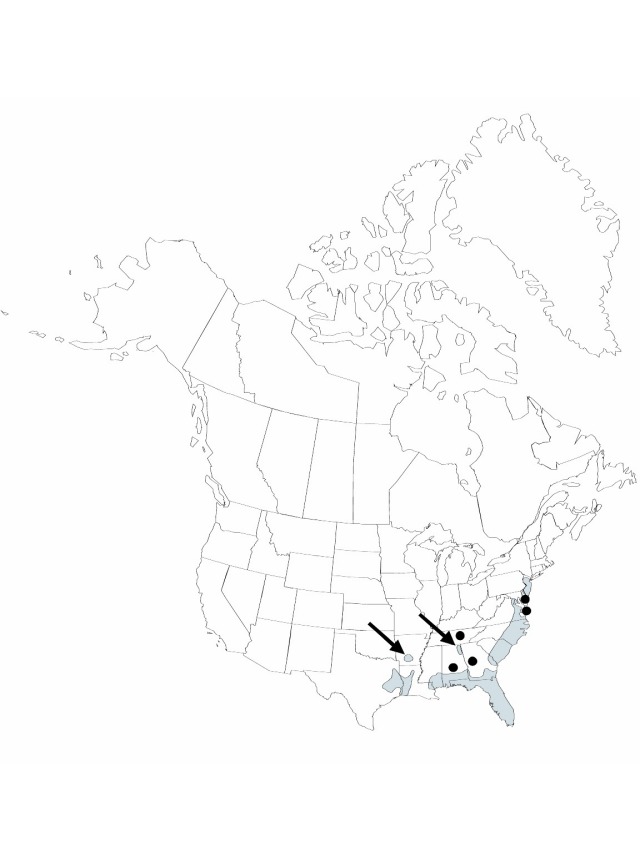Eriocaulon decangulare
Sp. Pl. 1: 87. 1753.
Herbs, perennial, 30–110 cm. Leaves linear or linear-attenuate, abruptly, then gradually, narrowing, 10–40 (–50) cm, apex acute or obtuse. Inflorescences: scape sheaths shorter than principal leaves; scapes linear, distally 1–2 (–3) mm wide, multiribbed; heads dull white, hemispheric to nearly globose, 7–15 mm wide, hard, very slightly flattened when pressed; receptacle copiously hairy; involucral-bracts reflexed, obscured by reflexed proximal bracteoles and flowers, straw-colored, narrowly ovate to lanceolate, 2–4 mm, margins erose to entire, apex acute, glabrous or apex with white, club-shaped hairs; inner bracts and receptacular bracteoles pale, linear to oblong or lanceolate, 3–4 mm, margins entire, sometimes becoming erose, apex narrowly acuminate, glabrous or apex with white, club-shaped hairs. Staminate flowers: sepals 2, yellow-white, linear, curved, 3 mm, distal surface abaxially, adaxially with white, club-shaped hairs; androphore club-shaped; petals 2, yellow-white, translucent, triangular to linear, nearly equal, with small tuft of white, club-shaped hairs abaxially at apex; stamens 4; anthers black. Pistillate flowers: sepals 2, yellow-white, linear, 2–3 mm, apex acute, abaxially with white, club-shaped hairs at apex; petals 2, pale, spatulate or narrowly elliptic, 1–2 mm, abaxially with translucent hairs proximally, white, club-shaped hairs distally, or adaxially glabrescent; pistil 2-carpellate. Seeds pale-brown, ellipsoid, 0.75–1 mm, very finely cancellate or sometimes with cancellae concealed by rows of delicate nearly appressed hairs.
Phenology: Flowering late spring–summer.
Habitat: Moist to wet sands or peats of shores, pine savanna, ditches, edges of cypress domes or savanna
Elevation: 0–300 m
Distribution

Ala., Ark., Del., D.C., Fla., Ga., La., Md., Miss., N.J., N.C., S.C., Tenn., Tex., Va., Mexico, Central America (Nicaragua)
Discussion
A possible variety, Eriocaulon decangulare var. latifolium Chapman ex Moldenke [in N. L. Britton et al., N. Amer. Fl. 19(1): 21. 1937], has yet to be thoroughly investigated. This plant typically is in the taller range and has thicker stems and scapes than in the type; it has very stiff blunt leaves to 50 cm × 13–20 mm with thicker scapes, heads 13–20 mm wide, and floral parts in the high range for the species. It occurs in wetter situations than usual for the species, and (fide R. R. Haynes, pers. comm.) flowers later. This morphology occurs in northwestern Florida and southern Alabama within boggy edges of cypress-titi-Nyssa on permanently wet substrates.
Selected References
None.
Lower Taxa
"narrowing" is not a number."narrowing" is not a number."narrower" is not a number.
